The experiences of a Chinese student at University of Tehran
Date: 2023-03-12 Writer: Huang Jingyi
Visiting Notes of Faculty of Literature and Humanities, University of Tehran
Huang Jingyi, 2021 Ph.D candidate, School of Philosophy, Renmin University of China
Preface to the study visit
Based on the memorandum of understanding signed by Renmin University of China and the University of Tehran, I went to the School of Humanities, University of Tehran, Iran on September 26, 2022 for a two-month visiting study. Dr. Ali Shahidi, Advisor to Dean on International Affairs at the School of Humanities, director of Iranian studies, member of the Academic Committee of Dehkhoda Iran Studies Center, and professor of the Department of Ancient Languages and Literature at the University of Tehran, signed the invitation letter for me to visit.
Abdolmajid Eskandari, Director General, Office of International Relations University of Tehran, provided great support for the smooth realization of this study visit.
University of Tehran Campus
Thanks to the arrangement of Mr. Eskandari, I successfully moved into the Atal student dormitory near the central campus. The dormitory is mainly prepared for international students of institutions such as the Dehghoda Language Center. It is very convenient to be three alleys away from the central campus. The bedroom is independent, and there is a common kitchen and bathroom. I live in a room facing each other with a Chinese sister, and from time to time, I will exchange food shopping and life experience in Tehran in the shared kitchen. Upstairs to mine live Iraqi, Indonesian, Japanese and Korean students. A cheerful Iraqi girl with brown curly hair and I often met in the elevator hall and greeted each other in Persian with a smile. Tehran is located on a plateau with strong sunshine. When I have nothing to do, I will go to the balcony of the bedroom to look at the branches on the trees and the fallen leaves in the courtyard of the dormitory. The shadow of the leaves covers the entire balcony. University of Tehran's student dormitory group is called "kuy" (kuyi, located in the north of the central campus, close to the north campus. "Cooy" was built in the 1950s and is a school property purchased by the University outside the campus. It is not only a living area for college students, but also an important organization and publicity place for club activities.
Tehran's landmark "Milad Tower" and Alborz Mountain are located at the northwest end of the city. It is said that when you open the window of the dormitory in "Cui", you can see the snow on Alborz Mountain.
University impression
The central campus of the University of Tehran is located near the Revolution Square, where the Faculty of Literature and Humanities, Science, Law and Political Science, Medicine and Art are located. The central campus is facing the famous bookstore street in Revolution Square, and the transportation is quite convenient. The College of Engineering, the Faculty of Foreign Languages, the Faculty of Sociology and the Faculty of World Studies are located on the northern campus of the University of Tehran near Tehran Normal University, about ten minutes' drive from the central campus. The Faculty of Theology and Islamic Studies is located north of Motahari Street, northeast of the Central Campus.
At the invitation of Dr. Shahidi, I participated in the courses he offered for the master's and doctoral students of the Iran Studies Program, mainly involving ancient Persian language and ancient Iranian culture. In addition, I audited courses in the Department of Philosophy and Department of History. The Central Library of the Central Campus of the University of Tehran has extremely rich collection resources. I can browse in the reading room and gain a lot. The Faculty of literature and Humanities also has its own library and an underground stack where I can borrow books.
The Faculty of Literature and Humanities at the University of Tehran was founded in 1934. It is one of the six colleges with the longest history since the founding of the University of Tehran. It consists of the Department of Persian Language and Literature, History, Philosophy, Ancient Language and Literature, Arabic Language and Literature, and Archeology. Department of Linguistics and Linguistics. "Philosophy and Literature" and "History and Geography" are the two major teaching goals of the college at the beginning of its establishment. Only the Department of Philosophy, Department of History, Department of Persian Language and Literature, and Department of Arabic Language and Literature recruit undergraduates, and the rest of the majors only engage in master and doctoral training.
In the Faculty of Literature and Humanities, the Iranian Studies Program is a two-year master’s program jointly managed by the Department of History and the Department of Ancient Iranian Language and Literature. It was officially launched in 2011 and recruits graduate students for international students and Iranian students. The Iranian studies program of the School of Humanities mainly focuses on cultivating students' understanding of Iran's history, culture, language and literature, and regularly organizes travel for international students. In addition to mastering Iranian history and human geography, students are also required to learn the fundamentals of sociological research. The Faculty of World Studies also has an English-language program on Iranian studies, but only accepts international students, focusing on political science and international relations.
My co-tutor, Dr. Shahidi, is the main person in charge of the Iran Studies Program of the School of Humanities. He is very kind and knowledgeable, and has his own unique experience in the education of international students. In the "Ancient Iranian Culture" class that Shahidi offers to master students, he always wants the students to feel the vitality of culture in their lives. Once he asked the students to bring a piece of plasticine and a small bamboo stick to the class, and then he taught us how to spell our own names in the ancient Persian cuneiform script, and how these letters were chiseled in on clay. Each of us engraved our names on the plasticine with peeled bamboo sticks, and took photos with the "clay board" happily. This kind of class is both vivid and profound. It seems to me that ancient culture is no longer just a relic carved on stone slabs, which is very far away from our lives, but actually comes from people's daily labor and production. Mr. Shahidi has his own research experience on ancient Chinese Khotan culture, and he also revealed to me that he has some plans to learn Chinese.
The departments of the School of Humanities are set up around the two dimensions of "Iran" and "the world" in terms of teaching and research. Today, the Philosophy Department of the University of Tehran currently has 12 in-service teachers, mainly involved in the two research directions of Western philosophy and Islamic philosophy. According to the description in the teaching manual of the philosophy department, philosophy is a scientific discipline. The mission of the Department of Philosophy is to impart to students the fundamentals of thinking, proving, asking, and seeking concrete questions such as existence, wisdom, and value through historical encounters with the concepts raised by key thinkers, and with the fundamental questions and dialogues of philosophy. Skill.
In the training of undergraduates, it is the training goal of the Department of Philosophy to be familiar with the concept of Western philosophy, to promote the cultural dialogue between Islamic philosophy and Western philosophy, to deepen the philosophical foundation of contemporary Iranian humanities research, and to train philosophy researchers for universities and scientific research institutions. The cultivation of master students is mainly carried out through special research. Comparative vision is the general tone of teaching in the Department of Philosophy. Teachers pay great attention to inspiring students to think in class, analyzing and comparing Western philosophy and Islamic philosophy.
The similarities and differences between different concepts in science. Postgraduates do not divide their studies according to the teaching and research sections. They can choose courses in Islamic philosophy and Western philosophy according to program requirements and personal interests. Only at the stage of writing a thesis do they need to choose an instructor according to the research direction. The curriculum of the Department of History is similar, which can be divided into three sections: "Islamic History", "Iranian History" and "World History".
Faculty of Literature and Humanities, University of Tehran
The Faculty of Literature and Humanities of the University of Tehran has a profound academic background, excellent educational resources, and an active humanistic environment, and the quality of teachers and students is very high. Most of the undergraduate and postgraduate students intend to continue their studies. Regarding Chinese culture, I thought that "Confucius" or "Bruce Lee" would be the only impression Iranian students had of Chinese culture, but I didn't expect "Tao Te Ching" to be the most attractive. The reason may be that the Youxuan of "Tao is Tao, very Tao" can arouse Iranian college students' recognition of oriental philosophy.
An Iranian boy named Irfan once told me his understanding of "Tao" after class. Irfan has a goatee and has a deep focus on Hegel's philosophy. He is a "little Hegel" among his classmates. He believes that "Tao can be Tao" is just like other Eastern philosophies, and the changes in "existence" Has greater inclusiveness. This is the difference between Eastern philosophy and Western philosophical tradition, and it is also the reason why he is interested in "Tao".
When I was listening to "History of Islamic Philosophy (From Ibn Rushid to Modern Times)", Mr. Hamid Ali Akbazad, the teacher in charge of the class and the general director of the publication of the Iranian Educational and Cultural Research Center, also invited me to brief for the classmates in class
To introduce the history and development of Chinese philosophy. I gave a small lecture to my classmates in broken Persian, and when I talked about the development of Chinese philosophy in contemporary times, Mr. Akabazadeh couldn't help but be filled with emotion. The subject is also of great interest. In the communication with teachers and students of Germany, I deeply realized that "contemporaryity" is indeed a problem that we all face together.
Once a philosophy student named Ali asked me, why is modern Chinese philosophy "modern"? Is the "modern" mentioned here based on the Cartesian turn? Because what we understand as "Islamic modern philosophy" is because these philosophers have shown a Cartesian turn on metaphysical problems. This is really a question I have never thought about. Ali is very interested in the art aesthetics of China and India, and plans to take Taoist philosophy as the topic of his master's thesis. I recommended "Huaxia Aesthetics" and Zhang Xianglong's works to him, hoping to help him.
Appreciate culture
In addition, I also visited Mr. Eskandari and Mr. Hamid Vafaei, the head of the Confucius Institute at the University of Tehran, the director of the Asian Studies Center, and the secretary of the International Cooperation Division. Mr. Hamet studied at Tsinghua University and Peking University successively. He has 10 years of study experience in China and is currently in charge of all affairs of Tehran University in China studies. He said many times that the University of Tehran welcomes students from Renmin University to visit and study at the University of Tehran, and he is very happy with my visit. In his conversation with me, he expressed his specific ideas on further promoting the pragmatic cooperation between the two universities. Mr. Eskandari also expressed to me his own thoughts on the joint training of talents, the exchange of teachers and students, the exchange of summer schools, the establishment of cooperation platforms, as well as the cooperation between the two universities in areas such as regional countries, literature and art research. expect.
The Iranian campus culture is unique. Just wandering around in the university is enough to be impressed by the Athens College-like "peripatetic" culture on the campus. The first thing that shocked me was how Iranian students like to sit on the floor so much! Not only do you go to lie in the small garden and bask in the sun when the weather is good, but when you usually have lunch, a few people can sit on the steps with a plate and chat while eating. On the steps at the door, in front of the statue of Ferdowsi, and even at the school gate in the evening, these are the favorite places for Iranian students to sit together. Especially after a get out of class, after class,
Before a class starts, the steps in front of the statue of Ferdowsi in the Faculty of Humanities are often full of chatting students, often sitting next to each other, a bit like the "breakfast club" in youth films. Most of the time, the professors of Dezhou University like to "tell but not write" in class. There are very few blackboard writing, and almost no one uses ppt. Students use mobile phones to record lectures given by professors in class, and sometimes students with ulterior motives volunteer to record.
Time is so long on the campus of Deda University. After a rather brain-intensive Kant special research class, there will still be many students around the professor, chatting while walking, until watching the professor slowly move from the corridor to the office, everyone lingers at the door for a long time. Separated, such a scene is like every day in the teaching building of the School of Humanities.
Before coming to Tehran, I had already heard about the unique "tarof تعارف" culture in Iran. This is an ancient etiquette that is somewhat elegant and somewhat cumbersome. For us foreigners, we generally only understand "tarov" as a kind of polite words or compliments in daily interpersonal communication. But when I looked at these melodious figures on campus, I gradually realized that this may also be a microcosm of "Taroff" culture. Language is not used here to cover up, but to maintain the intimacy between people. Most of the Iranians live in a small society with close relationships, and they are warm and cheerful by nature. They always like to use endless tricks in language to narrow the distance between people. When Iranian students babbled their opinions and doubts around the teacher, it was like little birds hovering in their nests on the treetops for a long time: In fact, there is nothing that must be said, I just want to talk to you Been together for a while so had to say something. Just like we always say "Persian is as sweet as honey", this is a very human side of campus life in Tehran.
Of course, I spent most of my time wandering the streets and alleys of Revolution Square. Most publishing houses in Tehran have their own book bars here. They each have their own tastes, and even the weekly window displays will carefully select suitable colors. Small carts selling Indian spices, second-hand book stalls spread out like showers, low-priced daily necessities sold in batches, and handicrafts made by young people themselves have filled the sidewalk in front of the bookstore since the sun first rose. . Except for certain hours on Friday, people come and go here every day, and the traffic is even more crowded during peak hours. Related to the history of Iran, Revolution Square is almost the spiritual symbol of the city of Tehran. The University of Tehran also has a vigorous vitality spanning nearly a century and a different kind of youth because it is the University of Tehran in Revolution Square.
Fourth, the end
The short visit life passed quickly. On the last day when I got up and left, I once again came to the statue of Ferdowsi in the School of Humanities and hugged and bid farewell to my classmates. The two-month study visit was sometimes tense and sometimes leisurely. The tense time comes from the tight course schedule and some unexpected "culture shock" in life. The leisure time comes from the unique charm of the University of Tehran and the city of Tehran.
In Iranian cultural tradition, a line of Ferdowsi’s poem has a profound impact on Iranians’ pursuit of life, “Whoever has knowledge will have power, and an old heart will be young because of knowledge” (توانا بود هر که دنا بود، ز دانش دل پیر برنا بود). I can often see many older postgraduates on the campus of the University, and everyone is used to it, and I don’t think it is a rare thing. They often return to school after working, and some people need to spend five to eight years to study their doctorate. I even heard that some students spend their entire lives studying their doctorate courses. The indifference to age issues shown by Iranian friends on the road to knowledge is very different from the Chinese universities I know. This also makes me reflect on myself, how do I view my own learning? Do I just see it as a phased task? How long has it been since I felt that knowledge is actually the length of life, a spontaneous pursuit of life?
This study visit is not the first time I have come to Iran. It no longer makes me feel the kaleidoscope-like magic when I first arrived, but it still gives me a long vacation both physically and mentally. During such a long vacation, I am walking and thinking, thinking and learning. I believe that cross-cultural communication is always two-way. The learning experience elsewhere not only allows us to see the life of the local people more clearly, but also allows us to see our own culture in the mirror of a foreign land. I cherish this visiting experience at the University of Tehran very much, and I am grateful for the support and kindness from all sides. Here I wish the friendship between China and Iran will last forever, and hope that young students from the two countries will have more opportunities to approach each other, understand each other, and feel the nourishment of each other's cultures in the future.
http://phi.ruc.edu.cn/xsfz/ztch/0a1d998b07a74f6e8bd098ded8fb0380.htm

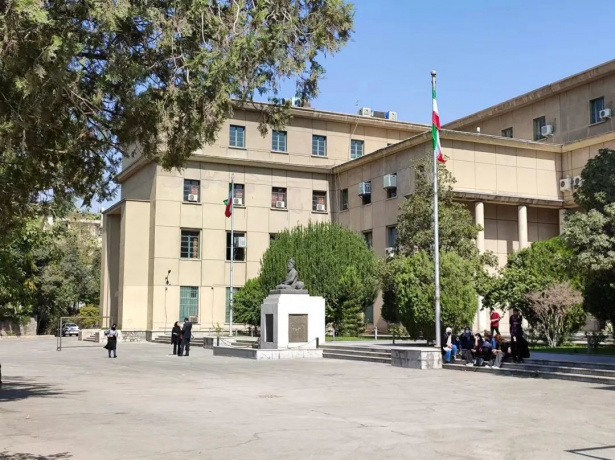
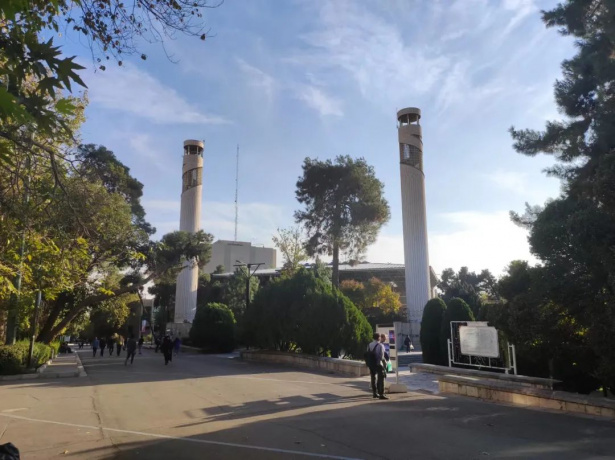
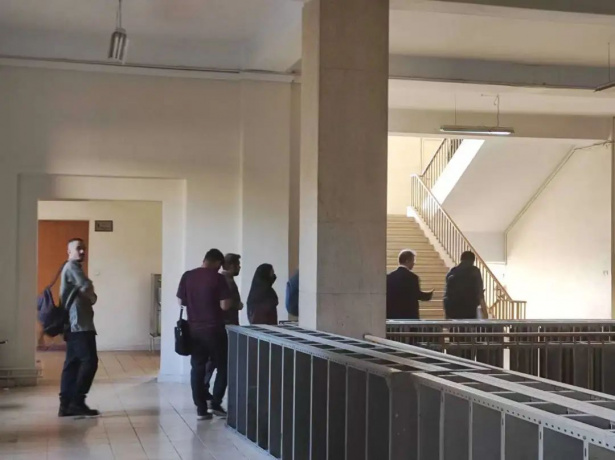
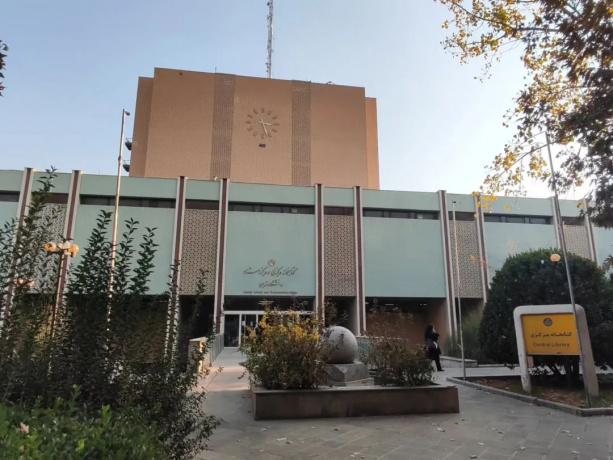
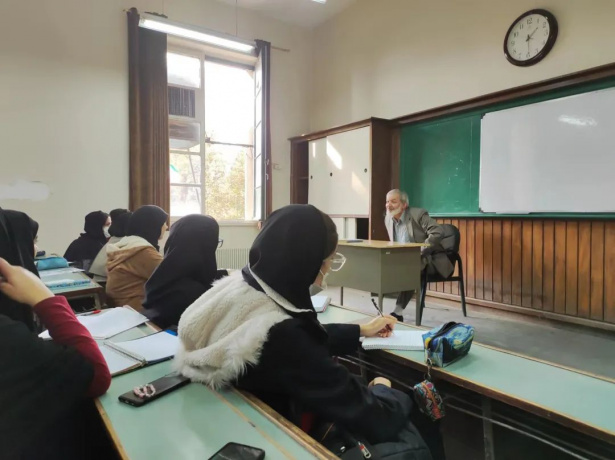
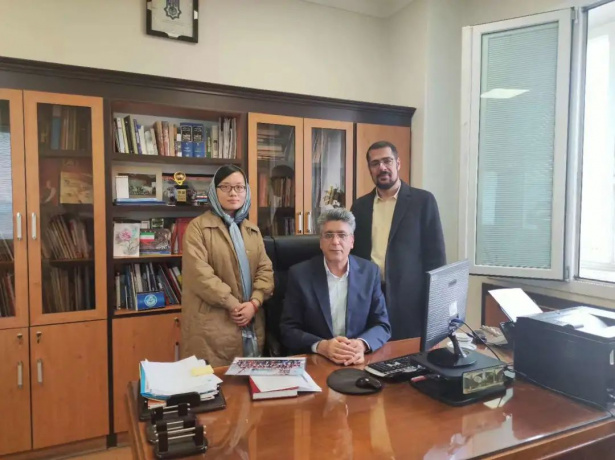
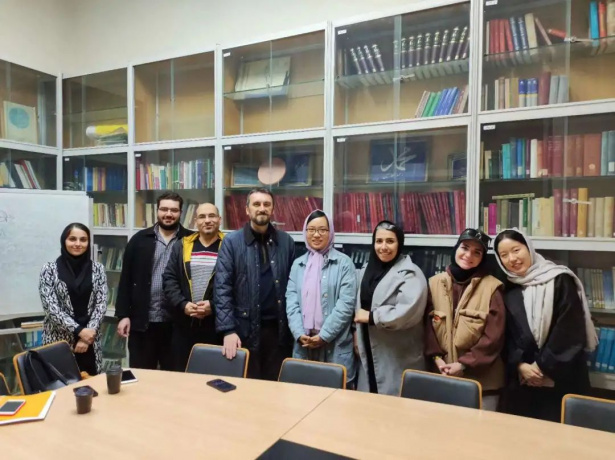
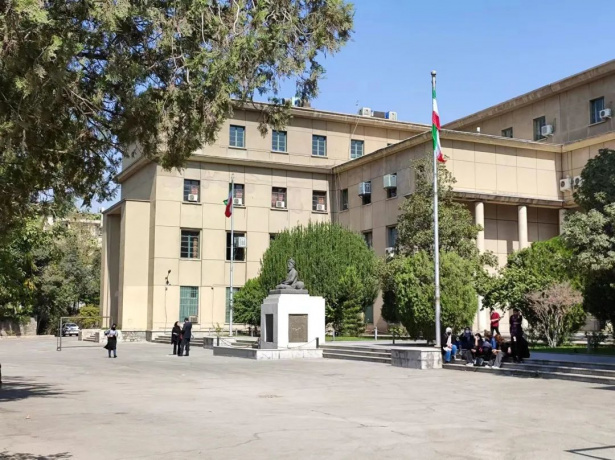
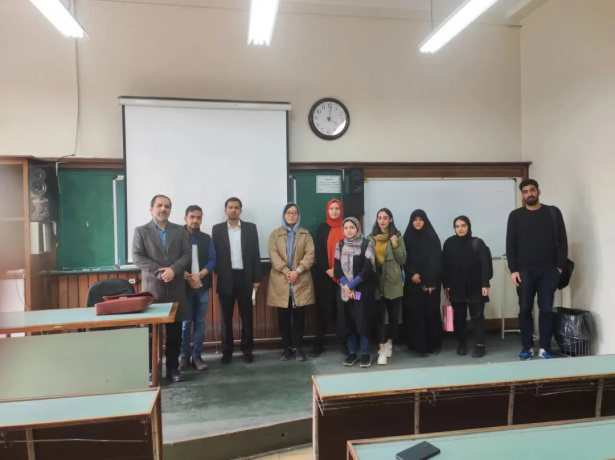
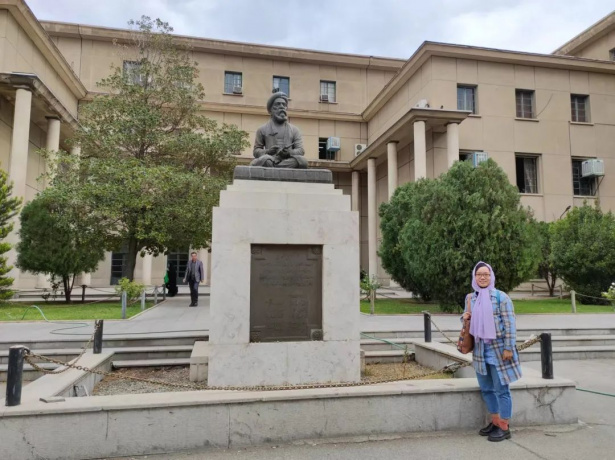










Your Comment :